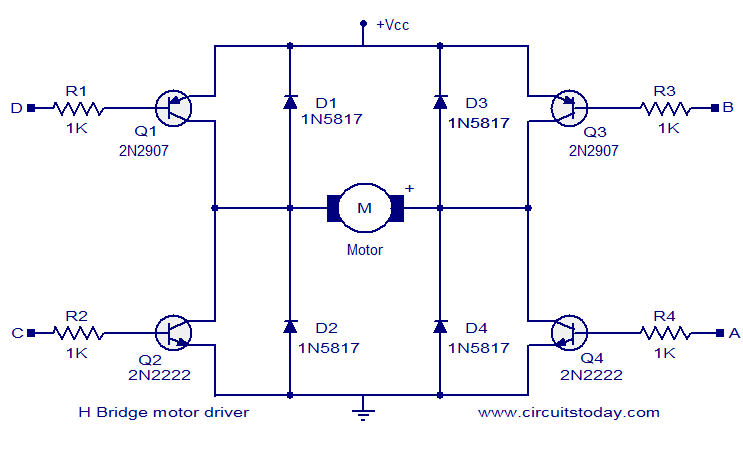
A Cmos Based Motorcycle Alarm circuit

This circuit provides an intermittent siren output with an automatic reset feature. It can be operated manually through a key-switch or a hidden switch, and it can also be configured to activate automatically when the ignition is turned off. By incorporating external relays, the system can immobilize the motorcycle and flash lights, among other functions. Various normally-open switches can be utilized, including "tilt" switches that activate when the steering is moved or when the motorcycle is lifted off its side-stand or pushed off its center-stand. Micro-switches can be employed to secure removable panels and pannier lids. Once activated, the siren's on-off cycle is controlled by resistors R9 and capacitor C5; increasing C5's value slows the cycle down, while decreasing R9's value speeds it up. The siren will sound as long as at least one switch remains closed, and the alarm will reset approximately thirty seconds after all switches are opened. The duration before the alarm deactivates can be adjusted by changing the values of R6 and/or C4. The circuit is designed to operate an electronic siren that draws between 300 to 400 mA. Using the motorcycle's horn is generally not advisable due to its accessibility for disconnection; however, if the horn is chosen, a relay rated for higher current must be connected to the "Siren" output. It is crucial to protect the circuit board and switches from environmental elements, as moisture can lead to malfunctions. An in-line 1-amp fuse should be installed as close as possible to the power source for optimal protection. The specific installation will depend on the motorcycle model, limiting further guidance. The circuit has a negligible quiescent current, ensuring no battery drain. For manual operation, a key-switch or hidden switch should be connected to the "off/set" terminals, while for automatic operation, a wire from the ignition circuit must connect to the "ignit" terminal. This setup allows the alarm to activate automatically upon turning off the ignition. It is important to note that the wire from the ignition switch is not protected by the 1-amp inline fuse, so if the wire run is lengthy, it should be fitted with its own 1-amp fuse near the source. When the alarm is set, if any switch remains closed, the siren will sound, potentially causing disturbances at night. A modification can be made to monitor the state of the switches using LEDs; all LEDs will be off when the switches are open, indicating it is safe to activate the alarm.
This electronic schematic is designed to enhance security for motorcycles by providing a comprehensive alarm system. The circuit utilizes a combination of resistors, capacitors, and switches to create a reliable and effective alert mechanism. The intermittent siren output serves as a deterrent against theft, while the automatic reset feature ensures that the system remains vigilant without requiring constant manual intervention.
In terms of component selection, the use of R9 and C5 allows for fine-tuning of the siren's activation rate, accommodating different user preferences and environmental conditions. The inclusion of tilt switches provides an additional layer of security by responding to physical movements of the motorcycle, effectively preventing unauthorized handling.
The circuit's design should prioritize environmental protection, necessitating the use of waterproof enclosures for the circuit board and switches. This consideration is crucial for maintaining functionality in various weather conditions and preventing potential failures due to moisture ingress.
The incorporation of an in-line fuse is essential for safeguarding the wiring against potential overloads. The recommendation to place the fuse as close to the power source as possible minimizes the risk of damage to the circuit in the event of a short circuit or excessive current draw.
For users seeking to monitor the status of the alarm system, the optional LED indicators provide visual feedback on the state of the switches. This feature enhances user experience by allowing users to verify the system's readiness before arming the alarm, reducing the likelihood of false alarms.
Overall, this circuit represents a robust solution for motorcycle security, combining manual and automatic operation capabilities with customizable features to suit individual preferences and operational needs.This circuit features an intermittent siren output and automatic reset. It can be operated manually using a key-switch or a hidden switch; but it can also be wired to set itself automatically when you turn-off the ignition. By adding external relays you can immobilize the bike - flash the lights etc. Any number of normally-open switches may be use d. Fit "tilt" switches that close when the steering is moved or when the bike is lifted off its side-stand or pushed forward off its centre-stand. Use micro-switches to protect removable panels and the lids of panniers etc. Once activated - the rate at which the siren switches on and off is controlled by R9 & C5. For example - increasing the value of C5 will slow it down - while reducing the value of R9 will make it faster.
While at least one switch remains closed the siren will sound. About thirty seconds after all of the switches have been opened, the alarm will reset. How long it takes to switch off depends on the characteristics of the actual components used. You can adjust the time to suit your requirements by changing the value of R6 and/or C4. The circuit is designed to use an electronic Siren drawing 300 to 400mA. It`s not usually a good idea to use the bike`s own Horn because it can be easily located and disconnected. However, if you choose to use the Horn, remember that the alarm relay is too small to carry the necessary current.
Connect the coil of a suitably rated relay to the "Siren" output. This can then be used to sound the Horn - flash the lights etc. The circuit board and switches must be protected from the elements. Dampness or condensation will cause malfunction. Connect the 1-amp in-line fuse AS CLOSE AS POSSIBLE to your power source. This is VERY IMPORTANT. The fuse is there to protect the wiring - not the alarm. Exactly how the system is fitted will depend on the make of your particular machine - so I`m unable to provide any further help or advice in this regard. The quiescent (standby) current of the circuit is virtually zero - so there is no drain on the battery.
If you want to operate the alarm manually use a key-switch or a hidden switch connected to the "off/set" terminals. For automatic operation connect a wire from the ignition circuit to the "ignit" terminal. Then every time you turn-off the ignition - the alarm will set itself. Remember that this wire from the ignition switch is not protected by your 1-amp inline fuse. So unless its run is very short - fit the wire with its own 1-amp fuse as close as possible to its source.
When you set the alarm - if one of the switches is closed - the siren will sound. This could cause annoyance late at night. A small modification will allow you to Monitor The State Of The Switches using LEDs. When the LEDs are all off - the switches are all open - and it`s safe to turn the alarm on. 🔗 External reference
This electronic schematic is designed to enhance security for motorcycles by providing a comprehensive alarm system. The circuit utilizes a combination of resistors, capacitors, and switches to create a reliable and effective alert mechanism. The intermittent siren output serves as a deterrent against theft, while the automatic reset feature ensures that the system remains vigilant without requiring constant manual intervention.
In terms of component selection, the use of R9 and C5 allows for fine-tuning of the siren's activation rate, accommodating different user preferences and environmental conditions. The inclusion of tilt switches provides an additional layer of security by responding to physical movements of the motorcycle, effectively preventing unauthorized handling.
The circuit's design should prioritize environmental protection, necessitating the use of waterproof enclosures for the circuit board and switches. This consideration is crucial for maintaining functionality in various weather conditions and preventing potential failures due to moisture ingress.
The incorporation of an in-line fuse is essential for safeguarding the wiring against potential overloads. The recommendation to place the fuse as close to the power source as possible minimizes the risk of damage to the circuit in the event of a short circuit or excessive current draw.
For users seeking to monitor the status of the alarm system, the optional LED indicators provide visual feedback on the state of the switches. This feature enhances user experience by allowing users to verify the system's readiness before arming the alarm, reducing the likelihood of false alarms.
Overall, this circuit represents a robust solution for motorcycle security, combining manual and automatic operation capabilities with customizable features to suit individual preferences and operational needs.This circuit features an intermittent siren output and automatic reset. It can be operated manually using a key-switch or a hidden switch; but it can also be wired to set itself automatically when you turn-off the ignition. By adding external relays you can immobilize the bike - flash the lights etc. Any number of normally-open switches may be use d. Fit "tilt" switches that close when the steering is moved or when the bike is lifted off its side-stand or pushed forward off its centre-stand. Use micro-switches to protect removable panels and the lids of panniers etc. Once activated - the rate at which the siren switches on and off is controlled by R9 & C5. For example - increasing the value of C5 will slow it down - while reducing the value of R9 will make it faster.
While at least one switch remains closed the siren will sound. About thirty seconds after all of the switches have been opened, the alarm will reset. How long it takes to switch off depends on the characteristics of the actual components used. You can adjust the time to suit your requirements by changing the value of R6 and/or C4. The circuit is designed to use an electronic Siren drawing 300 to 400mA. It`s not usually a good idea to use the bike`s own Horn because it can be easily located and disconnected. However, if you choose to use the Horn, remember that the alarm relay is too small to carry the necessary current.
Connect the coil of a suitably rated relay to the "Siren" output. This can then be used to sound the Horn - flash the lights etc. The circuit board and switches must be protected from the elements. Dampness or condensation will cause malfunction. Connect the 1-amp in-line fuse AS CLOSE AS POSSIBLE to your power source. This is VERY IMPORTANT. The fuse is there to protect the wiring - not the alarm. Exactly how the system is fitted will depend on the make of your particular machine - so I`m unable to provide any further help or advice in this regard. The quiescent (standby) current of the circuit is virtually zero - so there is no drain on the battery.
If you want to operate the alarm manually use a key-switch or a hidden switch connected to the "off/set" terminals. For automatic operation connect a wire from the ignition circuit to the "ignit" terminal. Then every time you turn-off the ignition - the alarm will set itself. Remember that this wire from the ignition switch is not protected by your 1-amp inline fuse. So unless its run is very short - fit the wire with its own 1-amp fuse as close as possible to its source.
When you set the alarm - if one of the switches is closed - the siren will sound. This could cause annoyance late at night. A small modification will allow you to Monitor The State Of The Switches using LEDs. When the LEDs are all off - the switches are all open - and it`s safe to turn the alarm on. 🔗 External reference





